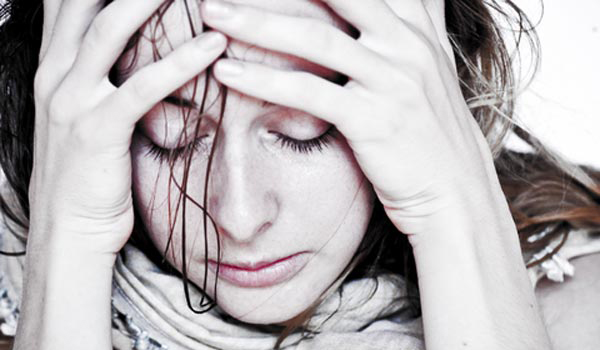Can Light Treat Depression?

If you have trouble rolling out of bed in the morning and feel unusually glum throughout the day in these weary wintery months, you, like 10 million other Americans, might be suffering from seasonal affective disorder (SAD). For years, people have beat the winter blues with an extra dose of artificial light throughout the day, and a new study has found that light therapy is effective for treating other types of depression as well.
People with SAD begin to feel down in the fall, a feeling that lasts throughout the winter months sometimes even into spring because the shorter days do not provide them with enough direct sunlight . Bright light treatment (BLT), also known as phototherapy, is a daily therapy consisting of spending at least 30 minutes looking indirectly at a "light box" that contains a specific kind of bright light. Light boxes mimic the wavelengths of sunlight and are brighter than regular lamps they beam out at least 10,000 lux, a measurement of light intensity. (Sunlight itself ranges from 32,000 to 100,000 lux on an average day.)
[Got a question? Send us an email and we'll look for an expert who can crack it.]
BLT has previously been proven effective at treating SAD-related depression symptoms such as moodiness and fatigue in people by stimulating the production of neurotransmitters, such as serotonin and dopamine, that promote positive feelings. This helps to lessen SAD symptoms such as lethargy, anxiety and irritability.
Recently, Ritsaert Lieverse, a researcher at the Amsterdam psychiatric institution GGZ inGeest, decided to test BLT on people suffering from Major Depressive Disorder (MDD, also known as clinical depression), a form of depression that is known to throw off circadian rhythms in a manner similar to SAD. The condition is particularly prevalent in the elderly, many of whom do not get enough exposure to sunlight.
Lieverse's team gave 42 MDD patients, all at least 60 years old, a bright blue light to use at home for an hour every morning for three weeks; another 47 patients received a dim red light as a placebo. The study, published in the journal Archives of General Psychiatry on Jan. 3, reports that 58 percent of the patients with the real BLT, the blue light, reported fewer depressive symptoms, while only 34 percent of the placebo group did.
BLT's benefits may be due in part to how the body resets its circadian rhythm to a more natural state following extra exposure to the bright light box, according to Lieverse. Researchers also observed a greater rise in the circadian hormone melatonin among those who received the bright light therapy compared to those who used a placebo.
Sign up for the Live Science daily newsletter now
Get the world’s most fascinating discoveries delivered straight to your inbox.
Along with BLT, simply using more lights and higher-watt bulbs may literally add more brightness to a depressed person's life.
"If BLT reduces non-seasonal depression in elderly patients, then additional lighting may easily be implemented in the homes of patients to serve as add-on treatment to antidepressants or as a stand-alone treatment in elderly depressed patients," the study concluded.
- Can Watching a Solar Eclipse Really Make You Go Blind?
- Does Cold Weather Cause Colds?
- Is Optimism Good For You?
Follow Remy Melina on Twitter @RemyMelina









